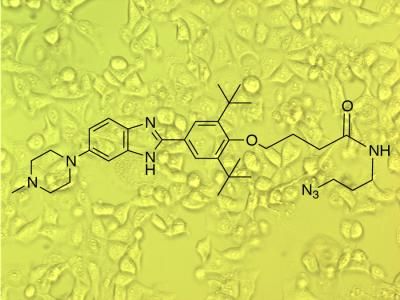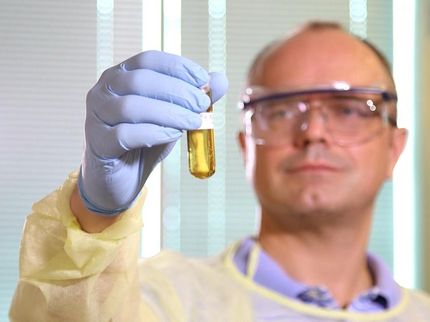Scripps Florida scientists turn muscular dystrophy defect on and off in cells
For the first time, scientists from the Florida campus of The Scripps Research Institute (TSRI) have identified small molecules that allow for complete control over a genetic defect responsible for the most common adult onset form of muscular dystrophy. These small molecules will enable scientists to investigate potential new therapies and to study the long-term impact of the disease.
"This is the first example I know of at all where someone can literally turn on and off a disease," said TSRI Associate Professor Matthew Disney, whose new research was published June by the journal Nature Communications. "This easy approach is an entirely new way to turn a genetic defect off or on."
Myotonic dystrophy is an inherited disorder, the most common form of a group of conditions called muscular dystrophies that involve progressive muscle wasting and weakness.
Myotonic dystrophy type 1 is caused a type of RNA defect known as a "triplet repeat," a series of three nucleotides repeated more times than normal in an individual's genetic code. In this case, a cytosine-uracil-guanine (CUG) triplet repeat binds to the protein MBNL1, rendering it inactive and resulting in RNA splicing abnormalities.
To find drug candidates that act against the defect, Disney and his colleagues analyzed the results of a National Institutes of Health (NIH)-sponsored screen of more than 300,000 small molecules that inhibit a critical RNA-protein complex in the disease.
The team divided the NIH hits into three "buckets"—the first group bound RNA, the second bound protein, and a third whose mechanism was unclear. The researchers then studied the compounds by looking at their effect on human muscle tissue both with and without the defect.
Startlingly, diseased muscle tissue treated with RNA-binding compounds caused signs of the disease to go away. In contrast, both healthy and diseased tissue treated with the protein-binding compounds showed the opposite effect—signs of the disease either appeared (in healthy tissue) or became worse.
The new compounds will serve as useful tools to study the disease on a molecular level. "In complex diseases, there are always unanticipated mechanisms," Disney noted. "Now that we can reverse the disease at will, we can study those aspects of it."
In addition, Disney said, with the new discovery, scientists will be able to develop a greater understanding of how to control RNA splicing with small molecules. RNA splicing can cause a host of diseases that range from sickle-cell disease to cancer, yet prior to this study, no tools were available to control specific RNA splicing.
Organizations
Other news from the department science

Get the life science industry in your inbox
From now on, don't miss a thing: Our newsletter for biotechnology, pharma and life sciences brings you up to date every Tuesday and Thursday. The latest industry news, product highlights and innovations - compact and easy to understand in your inbox. Researched by us so you don't have to.





















































